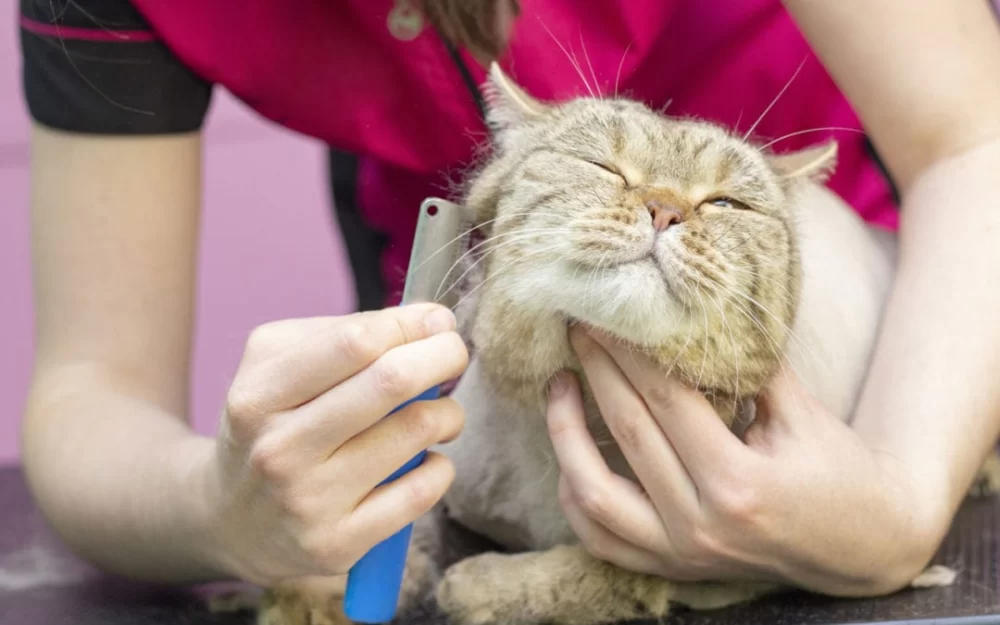- why-grooming-your-cat-at-home-is-important
- preparing-for-a-successful-home-cat-grooming-session
- step-by-step-guide-to-grooming-your-cat
- handling-common-challenges-in-cat-grooming
- professional-advice-and-resources-for-cat-grooming
1. Why Grooming Your Cat at Home Is Important
Grooming is an essential part of maintaining your cat’s health and happiness. While cats are naturally good at self-cleaning, home grooming plays a vital role in preventing matting, reducing shedding, and spotting health issues early. Many cat owners underestimate how grooming strengthens the bond between pet and owner — a story from a cat lover named Sarah illustrates this well. After she started brushing her cat Max regularly at home, Max became noticeably calmer and more affectionate, highlighting grooming as more than just hygiene but an emotional connection.
Understanding how to groom a cat at home not only saves time and money compared to frequent professional visits but also ensures your cat stays comfortable in familiar surroundings.
1.1 Health Benefits Beyond Appearance
Regular brushing helps distribute natural oils through the cat’s coat, keeping skin healthy. Grooming sessions are also opportunities to check for parasites like fleas, skin irritations, or unusual lumps that might need veterinary attention.
2. Preparing for a Successful Home Cat Grooming Session
Preparation is key to a smooth grooming experience for both you and your cat. Here are the foundational steps that often get overlooked:
2.1 Choosing the Right Tools
Selecting appropriate grooming tools is crucial. For short-haired cats, a soft-bristle brush or grooming glove often works best, while long-haired breeds benefit from a wide-toothed comb and a slicker brush to gently detangle fur without causing discomfort.
2.2 Creating a Calm Environment
Cats are sensitive to loud noises and sudden movements. Find a quiet, comfortable spot where your cat feels safe. Some cat owners have found success in playing soft music or offering treats to create positive associations with grooming time.
2.3 Understanding Your Cat’s Preferences
Each cat is unique—some enjoy gentle strokes while others prefer minimal touch. Start slow and observe how your cat reacts, adapting your technique accordingly. For instance, a cat named Luna initially resisted grooming but, with patience and gentle praise, began to relax during sessions.
3. Step-by-Step Guide to Grooming Your Cat
Knowing the right techniques can turn grooming into an enjoyable routine. Here’s a detailed approach on how to groom a cat at home effectively:
3.1 Brushing the Coat
Start with brushing, which removes loose fur and prevents mats. For long-haired cats, begin at the head and work your way down the body in the direction of hair growth, using slow, gentle strokes. Pay special attention to areas prone to tangles like behind the ears, under the legs, and around the neck.
3.2 Nail Trimming
Regular nail trims prevent scratching injuries and damage to furniture. Use specialized cat nail clippers and carefully trim only the sharp tips, avoiding the pink quick area. If you’re unsure, seek guidance from a veterinarian or professional groomer.
3.3 Ear Cleaning
Check the ears for wax buildup or signs of infection such as redness or odor. Use a damp cotton ball or soft cloth—never insert objects deep into the ear canal. If ears appear inflamed, consult a vet immediately.
3.4 Bathing When Necessary
Bathing cats can be stressful and is generally only needed if your cat is very dirty or has skin conditions. Use cat-specific shampoos and lukewarm water. A helpful tip comes from a pet owner who found that wrapping her cat in a towel during the bath reduced anxiety significantly.
4. Handling Common Challenges in Cat Grooming
Grooming cats at home sometimes presents difficulties. Understanding and addressing these challenges can make the process smoother.
4.1 Dealing with Fidgety or Anxious Cats
Some cats resist grooming due to fear or discomfort. Short, frequent sessions often work better than long, stressful ones. Using calming pheromone sprays or consulting your veterinarian about behavioral aids may help.
4.2 Managing Mats and Tangles
Mats can be painful and lead to skin problems. For severe tangles, it’s best to seek professional grooming help to avoid injury. For minor mats, use detangling sprays and carefully work through knots with your comb.
4.3 Maintaining Routine Grooming Habits
Consistency is key to keeping your cat comfortable with grooming. Scheduling regular times and rewarding your cat with treats can reinforce positive behavior over time.
5. Professional Advice and Resources for Cat Grooming
When unsure about grooming techniques or facing particular challenges, consulting professionals ensures your cat’s safety and comfort. Hidden Brook Veterinary offers expert advice, recommended grooming tools, and services tailored to your cat’s needs. Their guidance can be invaluable, especially for first-time groomers or owners of special-needs cats.
Many cat owners have found that combining professional insights with home grooming routines creates the best environment for their feline companions. With proper tools, patience, and knowledge, grooming your cat at home becomes a rewarding part of your pet care journey.












